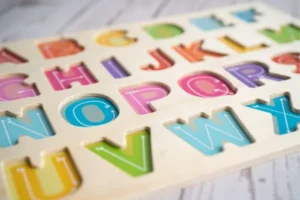Overview of the Topic
Language development is a fundamental aspect of a child’s growth, especially for children on the autism spectrum. Many children with autism face unique challenges in communication, such as delayed speech, difficulty with articulation, or trouble understanding and using social cues. These challenges can impact their ability to express needs, form relationships, and navigate social environments. Fortunately, educational toys can be an effective tool in supporting language development. When chosen carefully, these toys engage children in fun, interactive play that encourages verbal communication, social interaction, and cognitive skills—important building blocks for improving language abilities.
Purpose of the Article
The goal of this article is to help parents and caregivers choose language-boosting toys that are specifically tailored to meet the developmental needs of children on the autism spectrum. By understanding which toys can best support speech and language development, parents can provide their children with tools that foster communication and enhance overall growth.
Why It Matters
Early language development is essential for children with autism, as it greatly influences their ability to communicate effectively, connect with others, and gain independence. Improved language skills can lead to better social integration, enhanced learning experiences, and stronger relationships with family and peers. By using language-boosting toys, parents can create a supportive and enjoyable environment for children to practice their speech skills and achieve meaningful progress.
Understanding the Language Needs of Kids on the Autism Spectrum
Common Language Challenges
Children with autism often face language-related difficulties, such as speech delays, articulation challenges, limited vocabulary, and struggles with understanding or using social cues. These challenges can vary greatly but often impact their ability to communicate effectively.
Importance of Early Language Intervention
Early intervention plays a vital role in helping children on the autism spectrum improve their language skills. Therapies tailored to their needs, combined with engaging tools like educational toys, can foster communication, boost confidence, and support overall development.
Key Features of Language-Boosting Toys for Kids on the Autism Spectrum
Interactive and Responsive Toys
Toys that provide feedback, like those that speak, make sounds, or ask questions, encourage verbal interaction and help build communication skills.
Repetition and Imitation-Based Toys
Repetition and imitation are essential for language learning. Toys that promote these actions support children in practicing and reinforcing speech patterns.
Toys with Sensory and Cognitive Engagement
Multi-sensory toys that engage sight, sound, and touch help children connect experiences with language, enhancing both cognitive and speech development.
Social Play and Communication Toys
Toys that encourage turn-taking, role-play, and cooperative play help build conversational skills and improve social communication abilities.
How to Choose the Right Toy Based on Your Child’s Needs
Assessing Language Development Needs
Identify your child’s specific needs—whether it’s vocabulary building, improving social language, articulation, or overall communication skills.
Consulting Professionals
Seek guidance from speech-language pathologists (SLPs) or therapists to select toys that match your child’s developmental stage and therapeutic goals.
Trial and Observation
Experiment with various toys and observe which ones captivate your child’s interest, foster communication, and support their individual growth.
Examples of Language-Boosting Toys for Kids on the Autism Spectrum
1. Fisher-Price Laugh & Learn Smart Stages Chair
This interactive chair uses songs, phrases, and activities to encourage language development through engaging, hands-on play.
2. LeapFrog My Pal Violet
Customizable with your child’s name and favorite things, this toy promotes verbal interaction by teaching words, songs, and phrases tailored to their interests.
3. VTech Touch and Learn Activity Desk
Packed with learning activities, this desk helps children build vocabulary and improve language comprehension through interactive games and tasks.
4. Cozmo the Robot
An interactive robot that fosters verbal communication by responding to commands and encouraging playful interactions.
5. Melissa & Doug Wooden Scoop and Serve Ice Cream Counter
This pretend play set supports social language development by encouraging role-playing, turn-taking, and conversational skills.
Benefits of Language-Boosting Toys for Children on the Autism Spectrum
Improved Communication Skills
These toys enhance both verbal and non-verbal communication, helping children express themselves more effectively.
Enhanced Social Interaction
By encouraging cooperative play and turn-taking, language-boosting toys help develop social skills and foster meaningful relationships.
Boosted Confidence and Independence
Using these toys builds self-confidence and encourages children to communicate more independently in everyday situations.
Stronger Parent-Child Bond
Interactive toys provide opportunities for quality time, strengthening the connection between parents and their children.
Conclusion
Summary of Key Points
Choosing the right language-boosting toys is essential for supporting speech and language development in children on the autism spectrum. These toys can foster communication, social interaction, and overall growth.
Encouragement for Parents and Caregivers
With the right tools and strategies, children can make meaningful progress in their language skills, bringing them closer to their developmental milestones.
Final Thoughts
Patience and consistency are key. Celebrate small victories, stay dedicated, and remember that language-boosting toys offer long-term benefits that enrich your child’s communication journey.



